Monday September 2, 2019
Adelaide, the capital of South Australia, is the country’s fifth largest city with a population of around 1.1 million. This is about one quarter the size of Sydney or Melbourne and the city has a very different feel than either. It is relatively low rise with the tallest building topping out at 31 floors, has wide roads with at least two lanes each way, as well as a bike lane and, often, tram lanes and a belt of parks that almost surround the central district. It is very walkable with a good variety of restaurants and businesses and I can see why it often features in lists of the most livable cities. It is also known for its large number of festivals and, just as I began writing this, there was a large fireworks display in the park my room overlooks. It turns out that the biggest show of the year, the Royal Adelaide Show, began today and I missed it 🙁
I decided to only spend one full day in Adelaide because several of its major sights are similar to ones I’ve already visited in other cities, such as the botanic gardens and Aboriginal art collection at the art gallery. The tourist highlight, according to my guide and TripAdvisor, is the Adelaide Central Market but that is not open on Mondays.
I wanted to spend time wandering around the city and a band of showers was predicted to pass through around midday so I headed to the historic area, where Government House, the museums and the University of Adelaide are located, right after a great cafe breakfast. Although the Museum of South Australia has many similar displays to the National Museum of Australia in Canberra there are some local exhibits on megafauna, opalized fossils and Antarctic connections that interested me and I headed there after my wandering. It started raining just before I got back to my hotel where I did laundry and read about how to cope with outback driving disasters until the showers had passed.
In the afternoon I headed to Port Adelaide, about 25 minutes out of town, to visit the National Railway Museum. I knew next to nothing about railways in Australia and, although the museum leaned towards South Australia’s rail history, it had locomotives, carriages and artifacts from several of the great transcontinental trains.
The shopping areas look very different from Melbourne, This outside pedestrian area has several indoor shopping centres branching off on each side and is only half of Rundle Mall.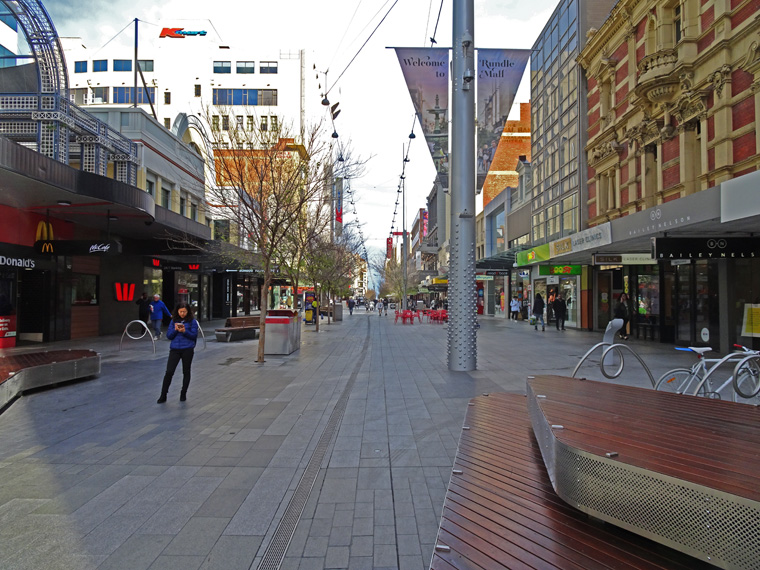
The University of Adelaide now occupies many of the older buildings in the museum area. This is Bonython Hall which is used for ceremonial occasions, such as graduation, and celebrations. It dates from 1936.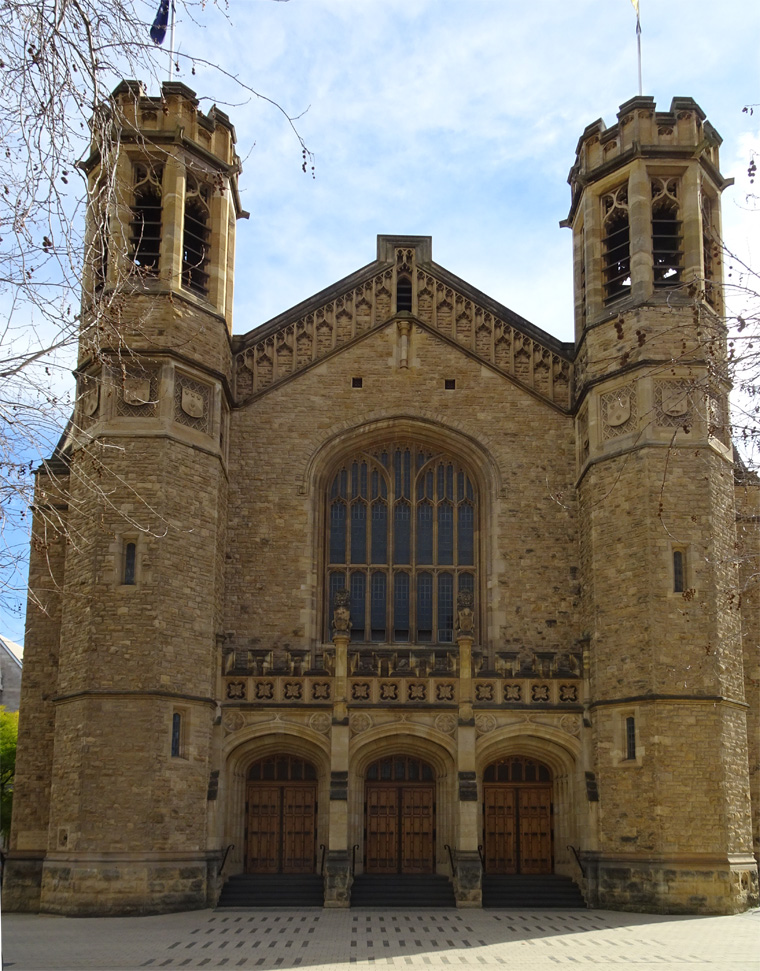
I did not visit the Art Gallery of South Australia but the outside was quite noticeable.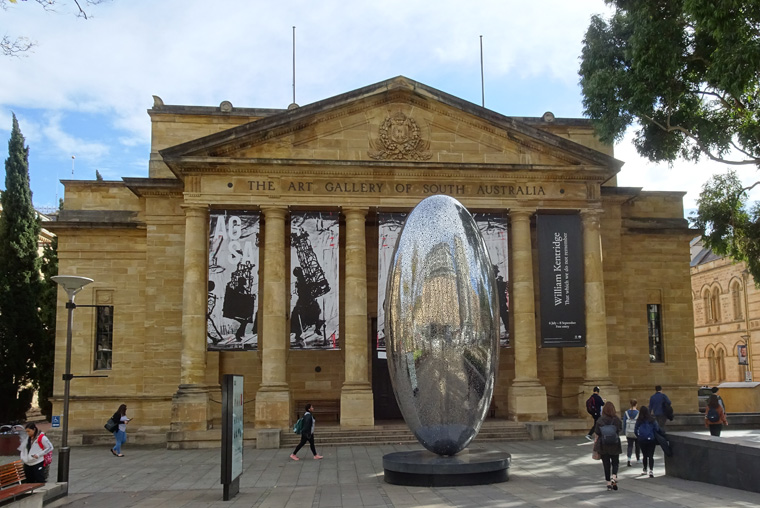
The First World War Memorial, completed in 1930, is pretty impressive – you can see its scale compared to the people.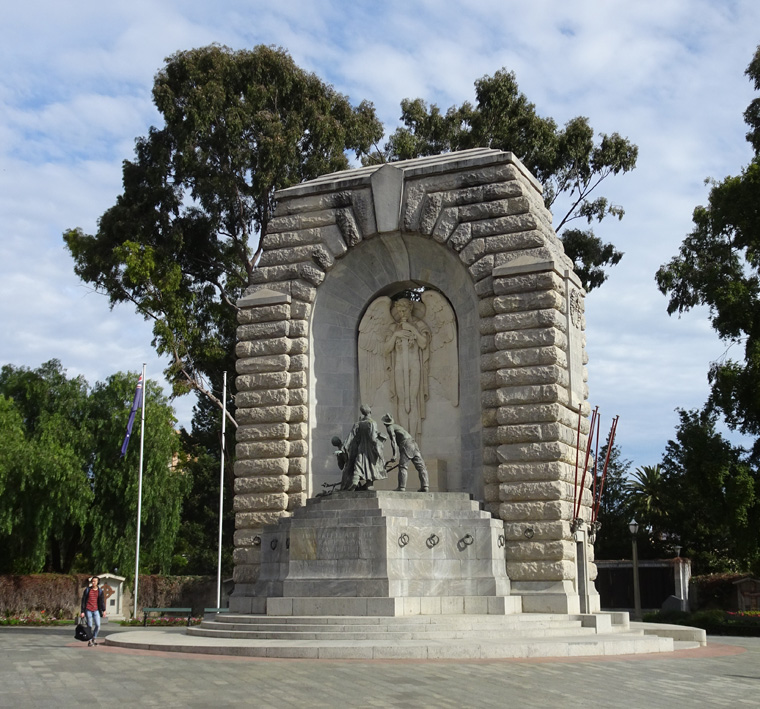
In a couple of days I will be in a town called Coober Pedy that produces 60% of the world’s opals and was fascinated to see the opalised fossils at the Museum of South Australia. These are opals that form in the spaces left behind in sedimentary rock after animal bones break down. The opalized bones from this 6 metre (20 feet) long Plesiosaur are literally jewels. The animal lived in the shallow sea that covered the area about 200 million years ago.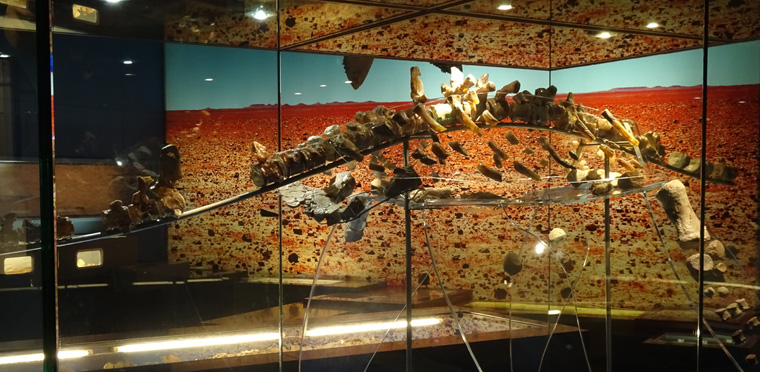 Here is a detail of part of the backbone.
Here is a detail of part of the backbone.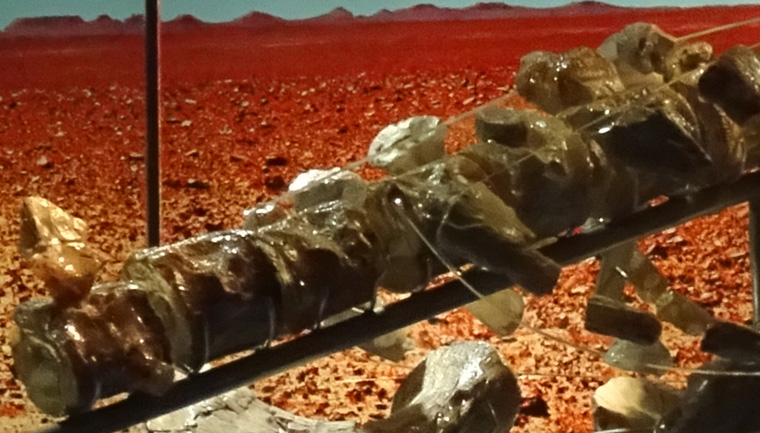
One thing I had not realized is that Australian railways have never standardized on one gauge of track and this creates many interoperability problems even in the current system. The National Railway Museum has installed extra rails to cope with both standard (1.4m) and wide(1.6m) gauges but still has to use carriers to bring in narrow gauge (1m) equipment.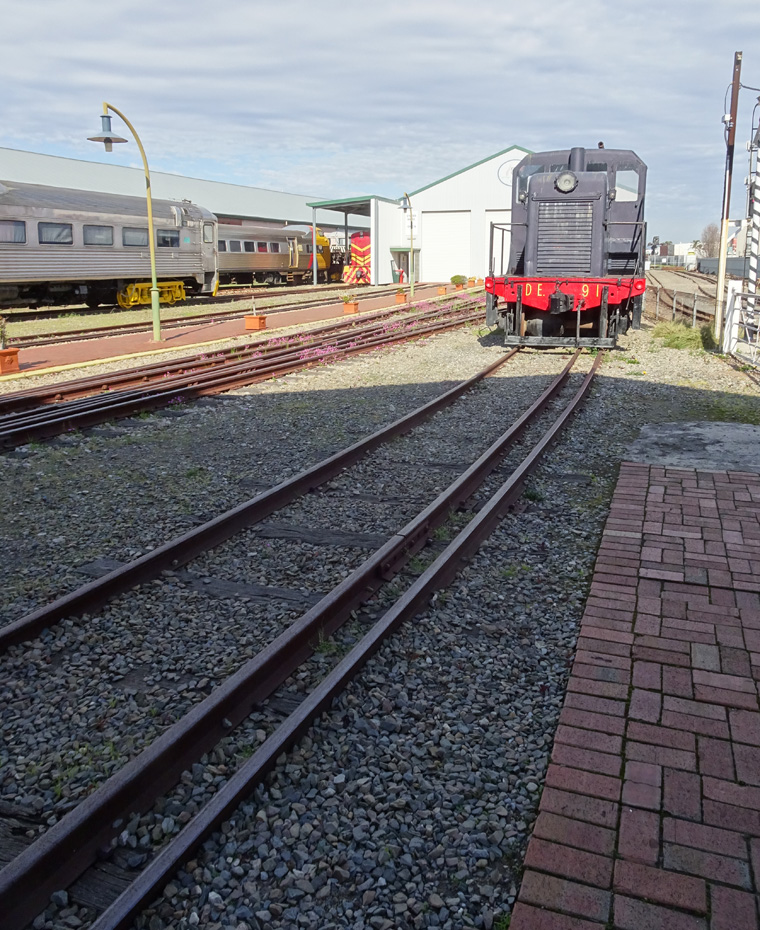
This was the problem that delayed true transcontinental rail travel until new track, laid across Western Australia, enabled this locomotive to pull the first Sydney to Perth train in 1970.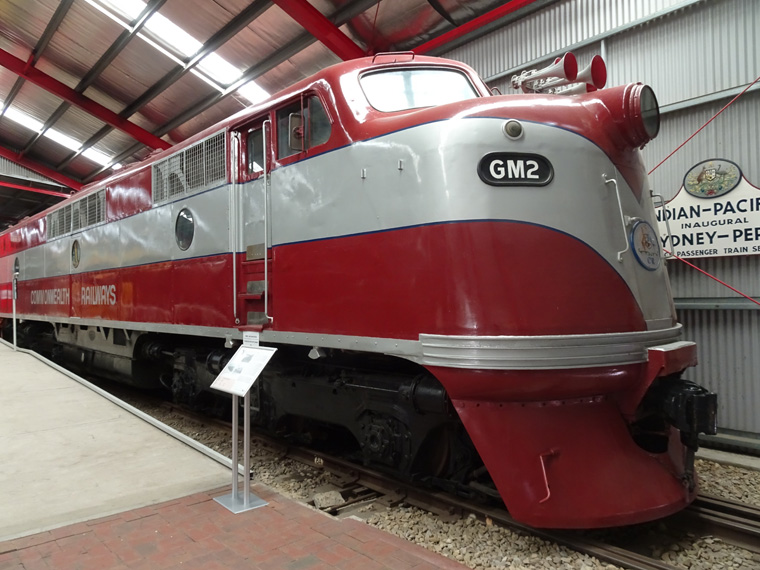
Tuesday September 3, 2019
Road video and map – Adelaide to Port Augusta, SA
The Adelaide Central Market does trade on Tuesdays and, after checking out and relaxing over another great breakfast, I walked over to explore. It was pretty impressive in terms of size and variety of shops and stalls but, for the city’s top tourist attraction, I was not blown away. It was part farmers market with plenty of fresh produce, fruit, meat and seafood, part traditional market with practically everything you might want from books to bedding to beer and a real camera shop, as well as a food court, and specialist restaurants from every part of the world. After awhile looking around I wandered back to the hotel to pick up my car and drove to Port Augusta. where I picked up supplies for my foray into the outback beginning tomorrow.
Adelaide Central Market includes produce – as you would expect,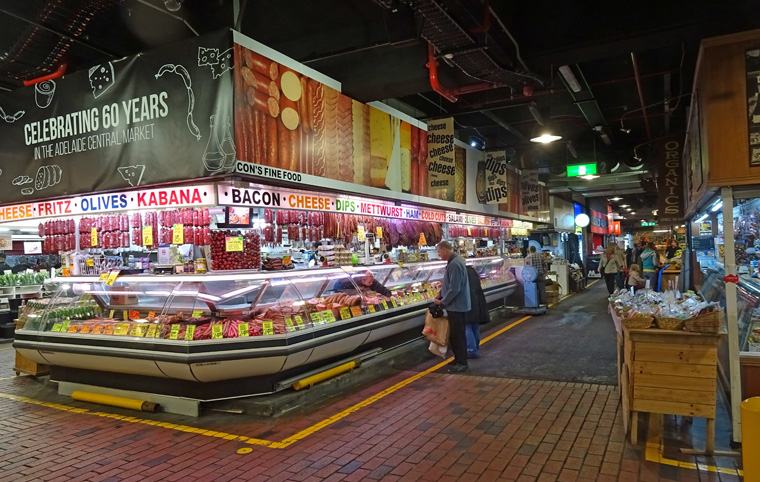
a very popular Smelly Cheese Shop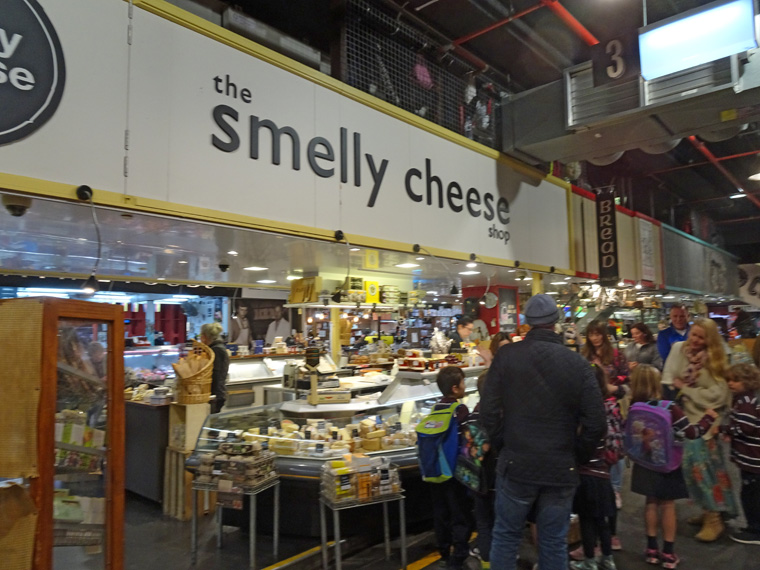
and several ethnic areas, such as this Chinese section.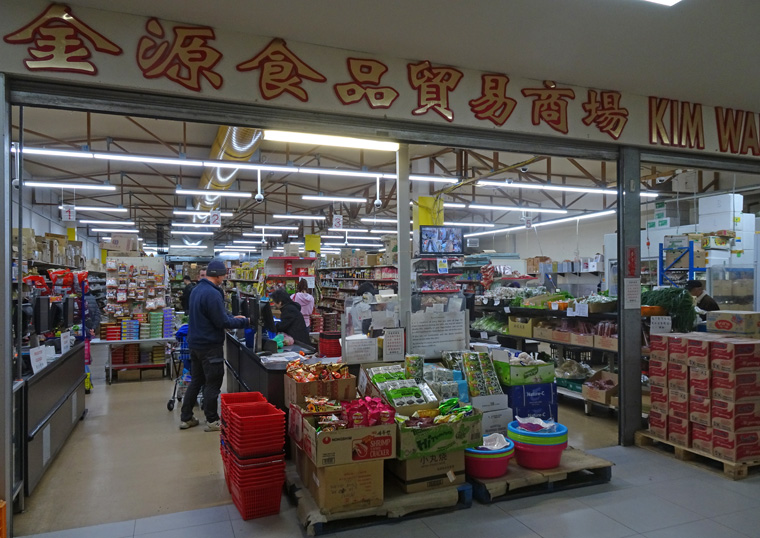

Hi Steve
Adelaide looks really vibrant. Not what I imagined! one of my uni friends moved there as a ten pound pom.
They didn’t stay long as they missed Wakefield but took back a gift – her younger sister is named Adelaide!!!
Have a great day – first day with the kids for me!!!
Cathy xx
I’m guessing your friend’s experience is a while back and Adelaide has become much more cosmopolitan recently.
Good luck with your classes, Steve.